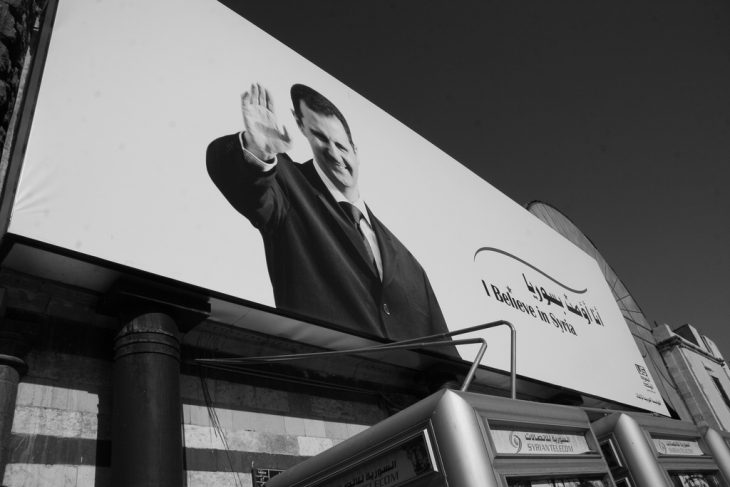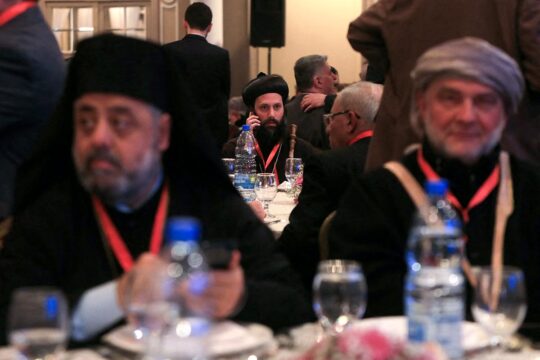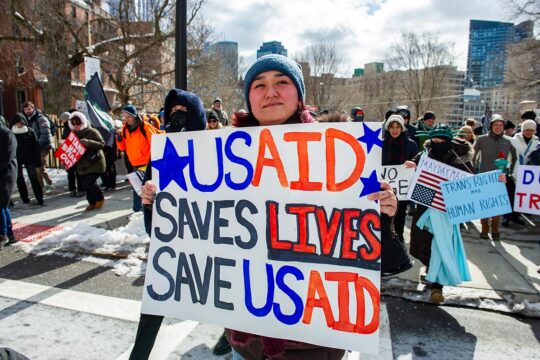The Syrian regime, accused by Amnesty International of large-scale hangings, had already been criticised for torture and summary executions in its prisons and intelligence services headquarters.
Amnesty said on Tuesday as many as 13,000 people were hanged in five years at the notorious Saydnaya military-run prison near Damascus, accusing the regime of a "policy of extermination".
Here are some of the accusations that have been made against the government of Syrian President Bashar al-Assad.
- 'Torture archipelago' -
On July 3, 2012, US-based rights group Human Rights Watch said Syria was holding tens of thousands of detainees in a "torture archipelago".
It documented 27 detention facilities across Syria it said were used to hold people swept up in the government's crackdown on protesters and carried out more than 200 interviews with former detainees, military and intelligence defectors.
"Almost all" described experiencing or witnessing torture, including "prolonged beatings, often with objects such as batons and wires", said HRW.
Other methods included "holding the detainees in painful stress positions for prolonged periods of time, often with the use of specially devised equipment, the use of electricity, burning with car battery acid, sexual assault and humiliation, the pulling of fingernails, and mock execution."
The New York-based watchdog said detainees were also being held in stadiums, military bases, schools and hospitals.
The Syrian Observatory for Human Rights says at least 60,000 people have died over five years from torture or harsh conditions in regime prisons.
The Britain-based monitor says half a million people have passed through regime jails since the start of the conflict in March 2011.
- Photographer reveals abuses -
In 2014, a former Syrian military photographer codenamed "Caesar" who defected, revealed 55,000 photos which gave a glimpse of some of the abuses being committed in Syrian jails.
The digital images of 11,000 dead detainees showed emaciated bodies and "Caesar" described seeing corpses with "deep wounds and burns and strangulations".
On September 15, 2015, France launched an inquiry into alleged crimes against humanity carried out by Syria's regime, largely based on those pictures.
And the UN General Assembly in December agreed to begin gathering evidence on war crimes in Syria as a first step towards prosecuting those responsible for atrocities there.
- 'Extermination' -
On February 8, 2016, a UN investigator told media in Geneva that "the mass scale of deaths of detainees suggests that the government of Syria is responsible for acts that amount to extermination as a crime against humanity."
The deaths were the result of state policies that targeted the civilian population, the investigator said.
- 'Human slaughterhouse' -
On August 18, 2016, Amnesty estimated that 17,700 people had died in regime prisons since the start of Syria's war.
It cited prisoners who described "appalling abuse and inhuman conditions" in intelligence agency detention centres and in Saydnaya prison.
Electrocution, scalding with boiling water and rape were among the forms of torture practised on a "large scale", the watchdog said.
In a February report titled "Human Slaughterhouse: Mass hanging and extermination at Saydnaya prison", Amnesty said another 13,000 people had died in group executions there.
It said the gruesome mass hanging rituals amounted to war crimes and crimes against humanity and were likely still taking place.






